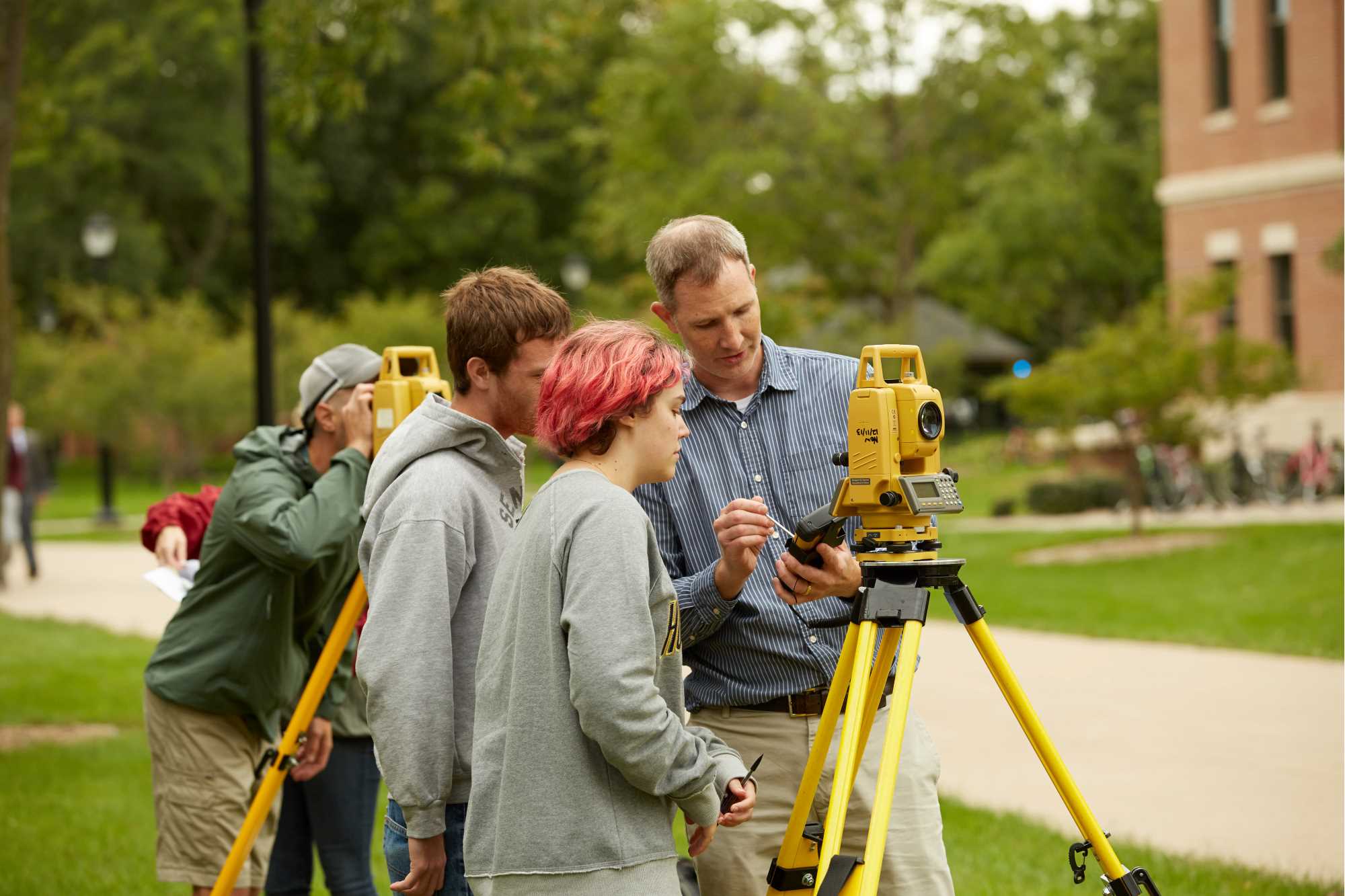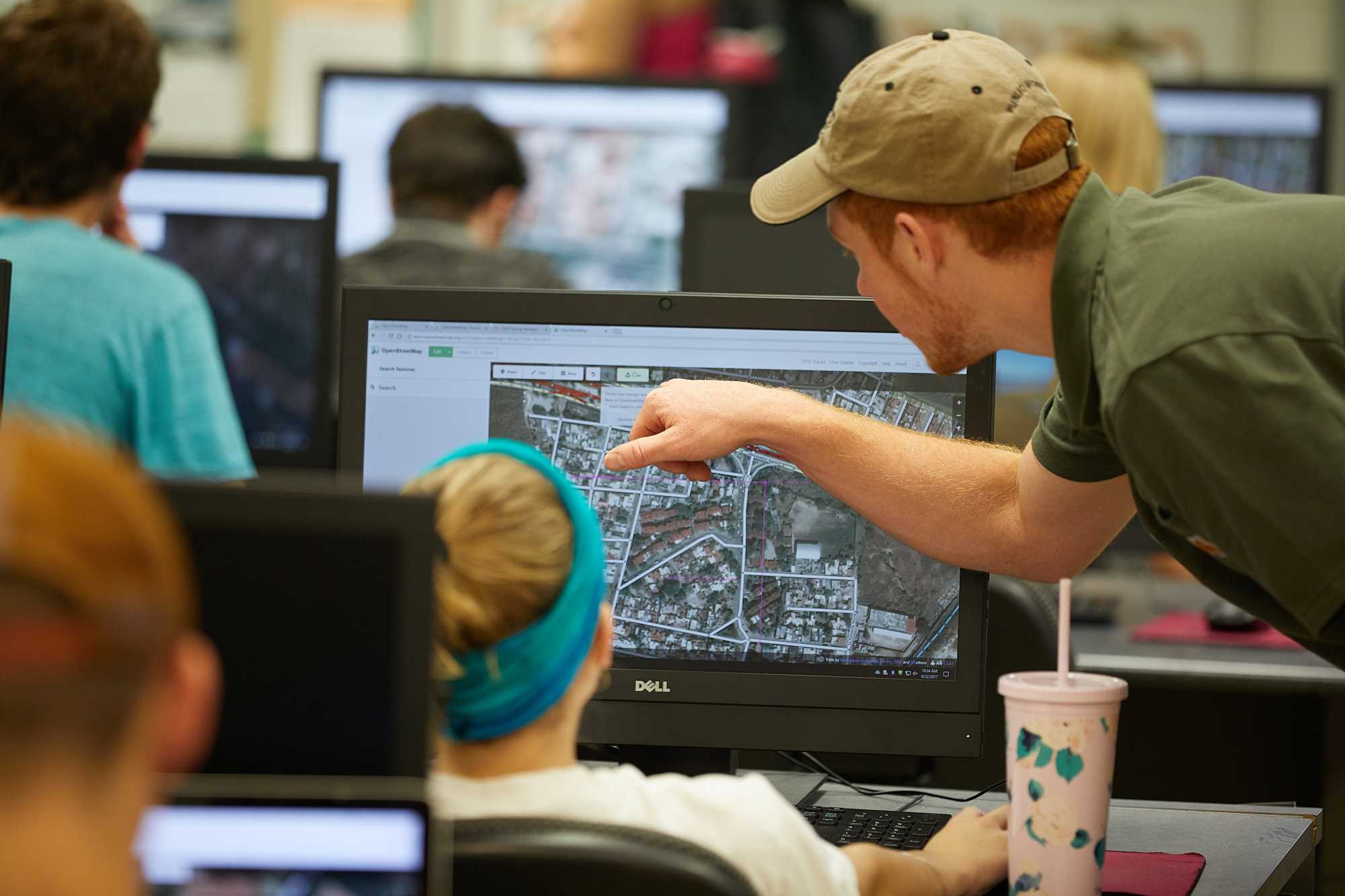Earth Science program
Study the Earth.
With an Earth Science minor, you'll learn about processes and structures on Earth that shape the landscape we live in. By understanding Earth’s rivers, glaciers, soils and climate, we can make better decisions in areas from natural resource management to land development.
Students in UWL's Earth Science minor gain experience using the latest technology to solve problems. They have access to professional Geographic Information System (GIS) software, drones and other high-end field equipment. Students and instructors work together to understand past and present environmental and societal conditions while developing strategies for building a more resilient and sustainable future. The program has taken students all over the world — from studying of environmental contamination in local wetlands to the impacts of climate change on Himalayan glaciers.
A program within the Department of Geography & Environmental Science
Careers in Earth Science
Career opportunities for earth scientists have increased as our society has placed a need on understanding our environment and careful planning of our land — both locally and internationally.
Theories and skills learned in earth science apply to a broad range of occupations. Our graduates have gone on to work for private businesses, government and non-profit agencies. For more details on alumni careers and wages visit the Geography & Environmental Science careers page.
Positions
- Geographic Information Systems (GIS) Specialist
- Environmental scientist
- Remote sensing specialist
- Natural resource manager
- Hydrographic surveyor
- Cartographer
- Conservation planner
- Hydrologist
- Forester
- Unmanned aerial vehicle (UAV) specialist
- Surveyor
- Sustainability coordinator
- Natural and cultural resource mapper
- Meteorologist or climatologist
- Park ranger
- Much more
Graduate school preparation
UWL's Geography and Environmental Science program provides a solid foundation for students who plan to pursue graduate school in a variety of fields. They may seek additional training in earth science, or obtain a graduate degree in areas such as geography, geology, geoarchaeology, environmental science, natural hazards, climatology, water resource management, hydrology, sustainability, and forestry.
What distinguishes UWL's Geography & Environmental Science program?
- Two state-of-the-art GIS computer labs, each with over 30 high-powered computers with cutting-edge, industry-standard software.
- Physical Geography and Environmental Science classrooms in the modern Prairie Springs Science Center outfitted for performing physical, chemical and biological analysis of soils, sediment and water. The labs contain an extensive rock and mineral collection, a wide variety of tools for hands-on learning of climate and Earth surface processes, computers loaded with physical geography and GIS-related software, two stream tables, and an augmented reality sandbox.
- The Physical Geography Research Lab supports hands-on research for students and faculty. This modern wet lab provides the materials and facilities to analyze soils and sediment cores. Students have access to up-to-date scientific instruments to study past and present environments.
- On-campus weather station. This station is run by the Geography & Environmental Science Department.
Dedicated instructors devote considerable amounts of their time to individual students inside and outside of the classroom.
UWL’s campus is located within a mile of towering sandstone bluffs, a 900-acre urban wetland, and the Mississippi River, all accessible through miles of hiking and biking trails. Students regularly explore the La Crosse area’s urban and natural landscape through course projects, field trips, and research projects.
Students have the opportunity to work on local and international undergraduate research projects. Students regularly receive funding to support their efforts and to present their results at local and national conferences.
Students have opportunities to participate in small group extended field trips to selected parts of the U.S. and abroad. Geography students have traveled to study and conduct research in places such as Tanzania, Nepal, Belize, Cook Islands, Iceland, and Puerto Rico.
Students seeking internships typically find them as the demand for interns in this field is strong whether searching for opportunities in the private sector or with government agencies. Internships prepare students for future careers and frequently lead to employment opportunities after graduation.
Students have access to field equipment including boats, unmanned aerial systems (drones), field mapping and surveying technology, sediment and soil sampling equipment, sonar for aquatic mapping, and much more.
A variety of scholarships are available for geography and environmental science students. UW-La Crosse also has a searchable database of scholarships.
















